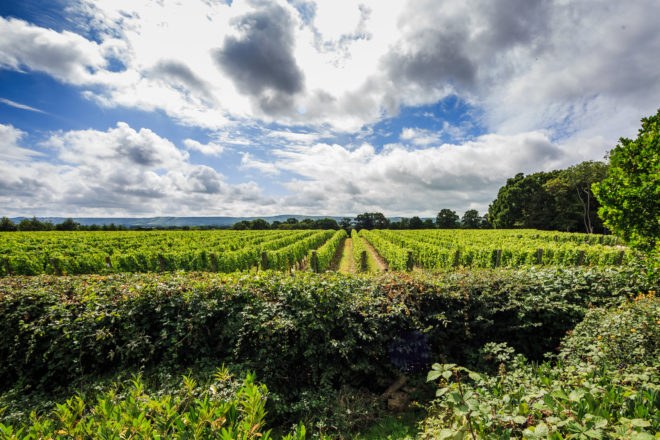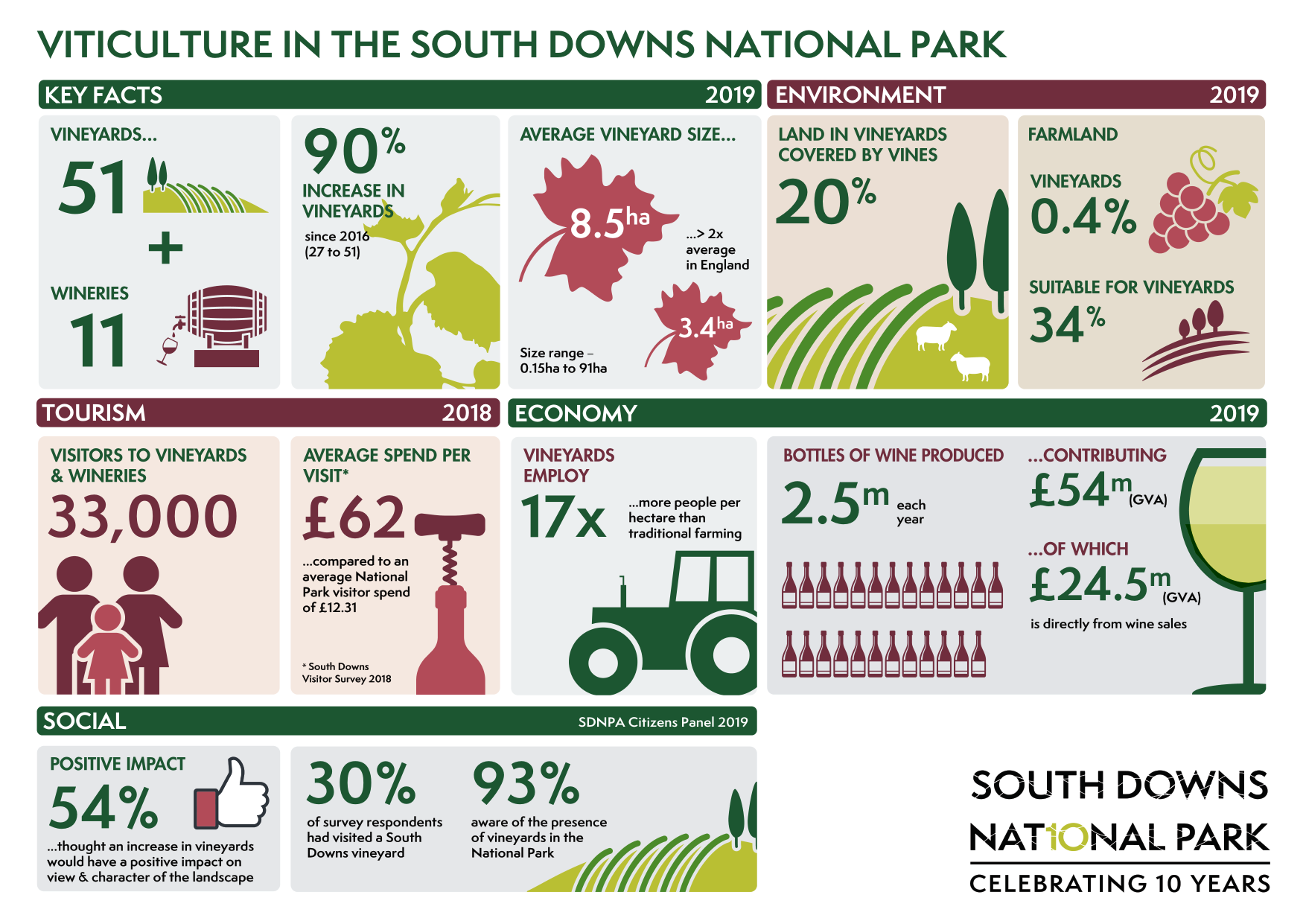Important new planning guidance on viticulture is adopted by Authority
May 4, 2021
With its sunny climate and chalky soil, the South Downs National Park has become one of the UK’s premier wine-making regions. Lucy Howard, Planning Policy Manager, gives an update on a key new planning document that will help determine planning applications in this growing sector.
 A new Technical Advice Note (TAN) on viticulture was presented to Planning Committee on 15 April.
A new Technical Advice Note (TAN) on viticulture was presented to Planning Committee on 15 April.
The TAN has now been published and will be a material consideration that will be taken into account by decision-makers at the Authority and the host authorities when determining planning applications for new viticulture, wine making and other related development.
The growing of grapes for wine, known as viticulture, and the processing of grapes to make wine is expanding rapidly in the South Downs National Park as it is in many other parts of the UK.
The impact of this growth has been assessed in the South Downs National Park Viticulture Growth Impact Assessment commissioned by the National Park Authority and recently completed by Vinescapes. This study identifies some important facts and figures.
There are currently 51 vineyards, of which 11 include wineries, covering 436 ha of land in the National Park.
These vineyards and wineries employ 358 people, including seasonal labour, attract approximately 33,000 visitors a year and contribute directly approximately £24.5 million to the local economy.

This contribution increases to £54 million if impacts on the wider economy are included.
The scale of cool climate viticulture in the National Park has the potential to increase dramatically with the study identifying 39,700 ha of land in the South Downs National Park (34.2% of existing farmland) as being suitable for viticulture.
If just one-tenth of this land (3,970 ha) were to be converted for growing grapes, this would represent an area larger than the current UK viticulture sector (3,500 ha in 2019) and more than 22 million bottles of wine could be produced annually.
The Growth Impact Assessment is a major step forward in our understanding of local viticulture, and the TAN seeks to address and provide advice on the main planning matters. The purpose of the TAN is to explain how to make successful planning applications for new viticulture, wine making and other related development that deliver multiple benefits for the National Park.
The TAN is primarily written for existing and prospective vineyard owners, estate managers, planning agents, Members and planning case officers both at the South Downs National Park Authority and local authorities providing planning services through hosted arrangements, and consultees on planning applications.
The key issues that this TAN seeks to address are:
- How viticulture relates to the purposes and duty of the National Park and delivers on Partnership Management Plan 2020-2025 outcomes
- What you can do without planning permission in the National Park
- What you need planning permission for in the National Park
- How to deliver multiple ecosystem services for the National Park in the context of a planning application
- How to comply with Local Plan policies.
This TAN is primarily a planning document, but there is of course other legislation and regulations relating to viticulture and winemaking such as tax and duties. Advice should be sought on these matters from the relevant authorities.
You can read the TAN and the study here

